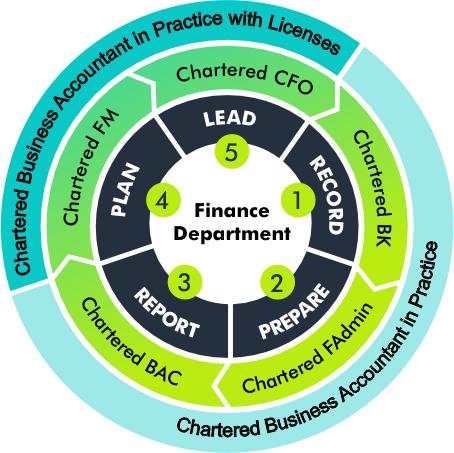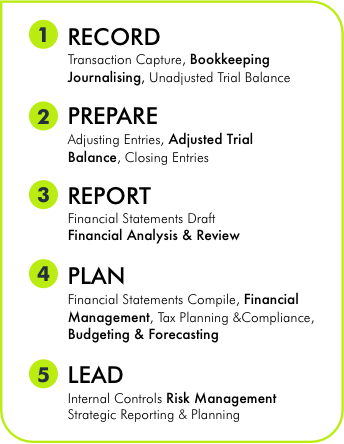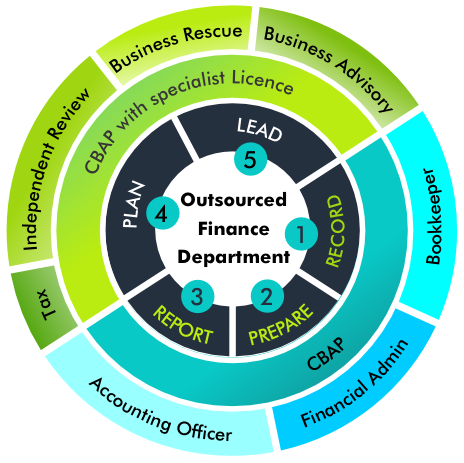
Chartered Financial Administrator (CFAdmin)
From keeping records to keeping the department running.
Why Become a Chartered Financial Administrator?
You’re not just capturing transactions anymore, you’re making sure everything ties together. When there’s a payment to chase, a payroll to run, or a balance sheet to explain, people come to you.
You’ve moved beyond junior finance work
You’re trusted to manage compliance and controls
You’ve got the credibility to step into higher roles
CFAdmin means:
It’s the recognition you deserve for keeping the finance engine running smoothly.
Become a CFAdmin
Join now and receive
the essential credential
for career development
R354 pm
for 6 months
Steps to becoming a Chartered Financial Administrator (CFAdmin)
-
Every finance department has different levels:
Functional: Data capturing, invoice processing
Administrative: Reconciliations, VAT returns, month-end support
Operational: General accounting and reporting
Management: Oversees teams, budgets, forecasting and compliance
Strategic: Sets direction, leads finance strategy, advises the board
CFAdmin is the designation for the Administrative level of the Finance Department.
When you’re ready, it’s your stepping stone to:
-
CBAC is for you if:
You’re already preparing budgets, financial statements, or tax returns
You want recognition for your technical skills and business impact
You see yourself moving into management or senior accounting roles
Minimum requirements:
National Diploma or Degree in Accounting/Finance, or Recognition of Prior Learning (RPL)
3 years’ experience in accounting, tax, or finance work
-
CBACs take charge of the organisation’s accounting and reporting:
Prepare and review financial statements
Manage budgets and forecasts
Oversee tax compliance (VAT, PAYE, income tax)
Support audits and liaise with external auditors
Analyse performance and present insights to management
You’re the bridge between the finance team and decision-makers.
-
Some tasks require higher qualifications and licensing:
Act in private practice as an Accounting Officer
Perform Independent ReviewsIf you want to start your own accounting practice, your next step is Chartered Business Accountant in Practice (CBAP).
-
Getting your CFAdmin designation is straightforward, follow these steps and you’ll be officially recognised in no time.
1. Become a member.
Create your profile and sign-up as a CIBA member at myciba.org
2. Apply for the CBAP designation
Upload ID, CV, and proof of qualifications or RPL evidence
Provide two reference letters and complete your experience assessment
Pay your designation fee (monthly or annual)
Get evaluated and receive your CFAdmin certificate
-
Staying recognised means keeping your skills sharp and your status active each year.
20 hours CPD per year
Completing an annual ethics course to lock in CIBA rewards
Complete CIBA’s Professional Readiness Programme once-off
-
CFAdmin gives you credibility, career growth, and a title that matches your real contribution to the business.
Professional recognition at operational level
Your name listed on the National Database of Accountants
A title that signals competence, credibility, and commitment
A clear pathway to management and leadership roles
“I used to be ‘the accounts guy’. Now management sees me as a partner in decision-making. CBAC gave me that credibility.” — Pieter du Plessis, CBAC
-
Most finance professionals hit the same wall, you’ve got the skills, but you’re stuck fighting for recognition, missing out on opportunities, or being overlooked for bigger roles.
CIBA changes that.
Through partnerships with national industry bodies, like ANNET (NPO sector), SACCI (business chambers), Creative Artists, Agriculture, and the legal profession, we:
Put your name in front of employers who value CIBA designations.
Train their finance staff, so they know and respect the CIBA standard.
Create sector-wide demand for members with your qualification.
Instead of chasing opportunities, you’ll have them coming to you.
-
CIBA rewards aren’t perks you buy, they’re recognition you earn.
Only members who stay in good standing, follow our ethics, and deliver quality work get access to them.When you uphold the standard, you unlock:
No more paying for learning: your ethics, compliance, and technical CPD is free every year.
Pay less for specialist skills: big discounts on advanced courses, licenses, and short programmes.
Help when you’re stuck: direct access to our technical desk, templates, and guides.
People knowing your worth: your name listed in the National Database of Accountants and featured in member spotlights.
The right connections: from annual conferences to sector-specific networking events.
A say in the rules: we fight your corner with SARS, CIPC, UIF, CIDB, DSD and others so you’re not ignored.
For practice members (CBAP): PI cover, software discounts, and direct client leads so you can grow faster.
We even run our own accounts this way, membership fees are recognised upfront, because the rewards aren’t “paid for” month by month. They’re earned by members who live up to the CIBA standard.
“I used to be ‘the accounts guy’. Now management sees me as a partner in decision-making. CBAC gave me that credibility.”
— Pieter du Plessis, CBAC




